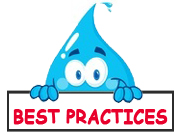Drip Email Campaign Best Practices
 In last month’s NewsLever feature — “The Basics of Email Drip Marketing” — we demonstrated how effective drip campaigns give prospects the information they need to help guide them closer to a purchase. In this second article of a two-part series, we highlight key best practices that drip email campaigns need to succeed.
In last month’s NewsLever feature — “The Basics of Email Drip Marketing” — we demonstrated how effective drip campaigns give prospects the information they need to help guide them closer to a purchase. In this second article of a two-part series, we highlight key best practices that drip email campaigns need to succeed.
Drip marketing allows organizations to automate their lead-nurturing processes by sending timely and relevant email messages to prospects and customers. Drip emails also help fill in the gaps of a company’s sales funnel, while freeing up valuable time and resources.
Great Example of a Successful Drip Email Campaign
A great example of drip-marketing success is a top-of-mind drip campaign FulcrumTech developed for a client who sells various wedding services. Historically, the content of this client’s emails primarily focused on selling. Instead, we took a relationship-building approach. Our goal was to build credibility and trust with prospects — two critical factors for “getting the sale.” This approach involved providing information that was valuable for brides-to-be through a series of emails sent over a period of a few weeks.
Our relationship-building approach worked. In this case, our client measured prospects’ engagement by click-throughs from the emails to their website, which is where a majority of the “selling” happens. Thanks to this drip email campaign, conversions (i.e, click-throughs to the website) increased by 138% for our client.
Here are some of the most important best practices that can help you achieve optimum results from your drip email campaigns:
- Segment your email lists. The most effective drip campaigns make prospects and customers feel as though you’re communicating with them personally. And you can accomplish that by successfully targeting different subgroups of your database. For example, a realtor likely wouldn’t want to send the same drip campaign to first-time buyers, a family with young children, and a couple nearing retirement age. Use what information you have about your subscribers to craft drip campaign messages that address their individual needs and concerns.
- Set up a preference center. This is one of the best ways to help you get valuable feedback from your prospects and customers. Also referred to as a subscription center, a preference center can help provide your organization with the information it needs to segment your lists, as well as determine your subscribers’ preferences in terms of frequency and content interest.
- Develop content that is simple, valuable, and engaging. The typical content marketing recommendations that apply to general email marketing also should be followed in developing drip email campaigns. In addition to sending small bits of information that can be quickly digested, also be sure the content of your drip emails takes into consideration where prospects are in the buying cycle. Someone who is ready to make a purchase has different needs, for example, than someone who is just learning about your organization. Sending relevant content not only is an important way to help keep subscribers opening your emails, but also helps avoid the dreaded unsubscribe.
- Optimize your drip emails for mobile. With the rapidly growing number of people using mobile devices to read and respond to their emails, tailoring your email drip campaigns with mobile users in mind is vital. If your messages are taking too long to load or are too small to read on a mobile phone, recipients are much more likely to give up and move on to the next email. Click here to learn more about optimizing emails for mobile.
- Understand and adhere to the law. Be sure to differentiate your drip marketing emails from spam by following the rules established in the CAN-SPAM Act and Canada’s Anti-Spam Legislation (CASL), which is about to take effect in July 2014. This would include sending only to prospects and customers who have opted in to receive emails from you or who have an ongoing relationship with your company. Also, you must provide a prominent opt-out option in every email. Click on these links for more information about how to ensure CAN-SPAM and CASL compliance.
- Continuously test and optimize your drip email messages and landing pages. This will help you determine what’s working in your drip email campaigns and which elements could be improved to garner even better results. Measure such metrics as opens, click-throughs, unsubscribes, delivery rates, bounces, and conversions for each email campaign. Fine-tune your drip messages and dedicated landing pages by testing such elements as subject lines, calls to action, offers, headlines, and images. Plus, test the response rates to sending your messages on different days of the week and different times of the day to find what gets the best response for your specific target audience.
- Automate, automate, automate! There are so many email-marketing automation tools available today — from segmentation and social media connectors to customer relationship management (CRM) integration and analytics — that email drip-marketing campaigns are now easier than ever to design and effectively implement. Contact us to find out more about how to choose and use the email-marketing automation tools that best fit your business needs.
If you think your organization would benefit from a quality drip-marketing program and could use a hand in the design and implementation, you can find help at FulcrumTech. Email us or give us a call at 215-489-9336 and we’ll help you put these best practices to work by optimizing your current drip email campaigns or designing a brand new one.
Other Articles You Might Like
- 4 Critical Steps to Make Sense of Your Drip Campaign Data
- Email Drip Campaigns — Stay Top of Mind with These 5 Tips
- How to Use Triggered Emails to Drive Conversions